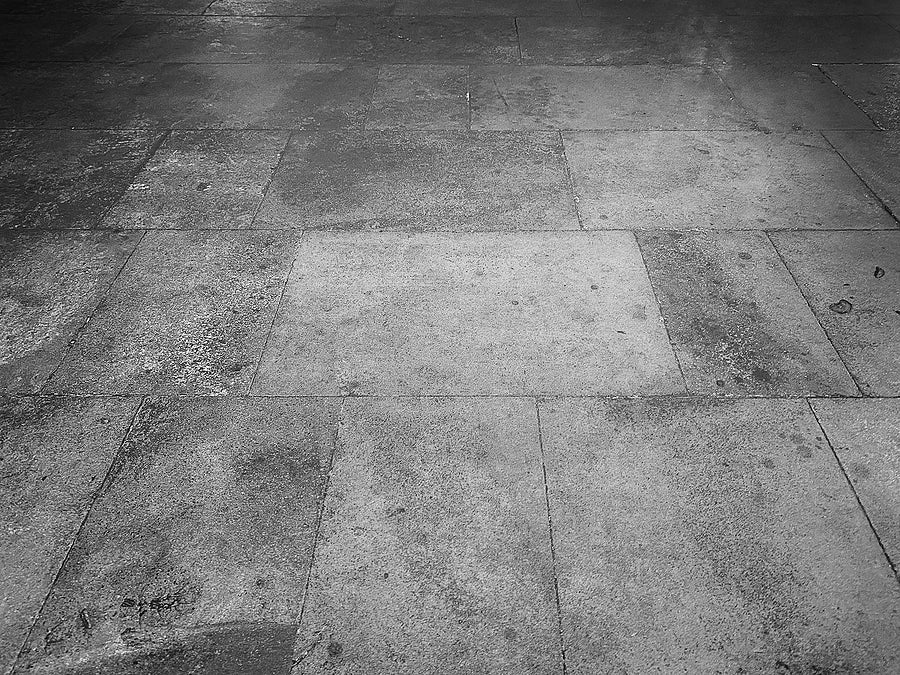
What Is The Difference Between Lino And Vinyl Flooring?
Share
The trend for nature-inspired flooring has not gone away, but many homeowners, building managers and hospitality venues have been looking for alternative materials that take the beautiful look of hardwood or natural stone, but without the hassle or the cost.
There are a lot of options out there, but the most popular of these are luxury vinyl tiles and lino with a stone effect design.
Both of these materials are very similar to each other and are often used in the same types of rooms for the same types of reasons. However, underneath the surface, they are both quite different, and these individual qualities can make them more or less suited for certain types of flooring environments.
Here are the main differences and how you can use them to your advantage.
Linoleum Is Much Older Than Luxury Vinyl Tile
As a resilient flooring material, linoleum is old, and with that age comes refinement and a greater understanding of the more subtle properties that it has.
Linoleum was invented in 1860 under somewhat serendipitous circumstances, after English manufacturer Frederick Walton found a way to solidify linseed oil to create a protective varnish that ultimately created a water-resistant cork-based flooring solution.
By contrast, polyvinyl chloride (PVC), one of the core compounds used to make vinyl flooring, was only developed in the 1920s, was only widely sold in the 1940s and only became the de facto standard for professional hard surfaces in the 1960s.
Linoleum Is Wholly Natural
One of the reasons why linoleum has still seen relatively wide use outside of historical preservation is that throughout its many refinements, linoleum is made entirely from natural materials.
Modern lino is made from linseed oil, derived from the flax plant, which is mixed with wood flour, pine pitch resin and cork dust, before being pressed together, stencilled and coloured to create authentic-looking finishes that resemble various materials.
By contrast, LVT is primarily made from PVC as part of a multi-layer tile which also features a bottom felt or fibreglass layer, a photographic design and an outer surface layer to protect it.
The main implication for business owners when it is installed is that lino is much easier to recycle, given that all of its materials are natural, whilst LVT recycling practices have taken significantly longer to be established.
As businesses and individuals become more conscious of their environmental impact, many people have started to adopt lino again for its environmentally friendly, all-natural properties.
Vinyl Is More Waterproof
From the 1870s up until the 1950s, lino was the standard material used for kitchens instead of tiles, varnished hardwood or sealed natural stone, but whilst it is highly water resistant, it is not entirely waterproof on its own and may need additional sealants in environments where there is a greater chance of spills.
Given that it was used so much for decades, a small spill was not ruinous, but humidity could cause tiles to curl, and flooding could potentially destroy the flooring entirely.
By contrast, modern LVT with fibreglass backing is almost completely waterproof and has seen widespread use in basements and underground industrial settings.
Both Provide Their Stone Effect In Different Ways
Both lino and LVT can be used to provide authentic-looking facsimiles of stone and wood materials, but the ways in which the two manage this could not be more different.
Vinyl flooring uses a dedicated image layer that provides an authentic, highly detailed and often three-dimensional looking visual effect once laid onto a floor, whilst the design and visual effects of lino run all the way through the tile itself.
Unlike LVT, the pattern or texture of lino can be seen throughout the entire material, and this can help give the flooring a little more texture. It also means that slight wear and tear will not meaningfully change how the flooring looks and can help lino last a long time
The downside of this is that vinyl flooring can be made to resemble practically any material, providing a vast range of realistic-looking effects that resemble any kind of stone or woodgrain most people would want in their home.
Vinyl Requires Little Maintenance
One of the biggest advantages of vinyl as a flooring material is that it needs almost no maintenance outside of an occasional sweep, mop and vacuum. By contrast, lino needs to be sealed occasionally, and any stains that have taken hold must be cleaned using a mild detergent.
The cost of this is longevity; LVT will tend to last over a decade before tiles need to be replaced, whilst linoleum can last over 40 years if well maintained.
